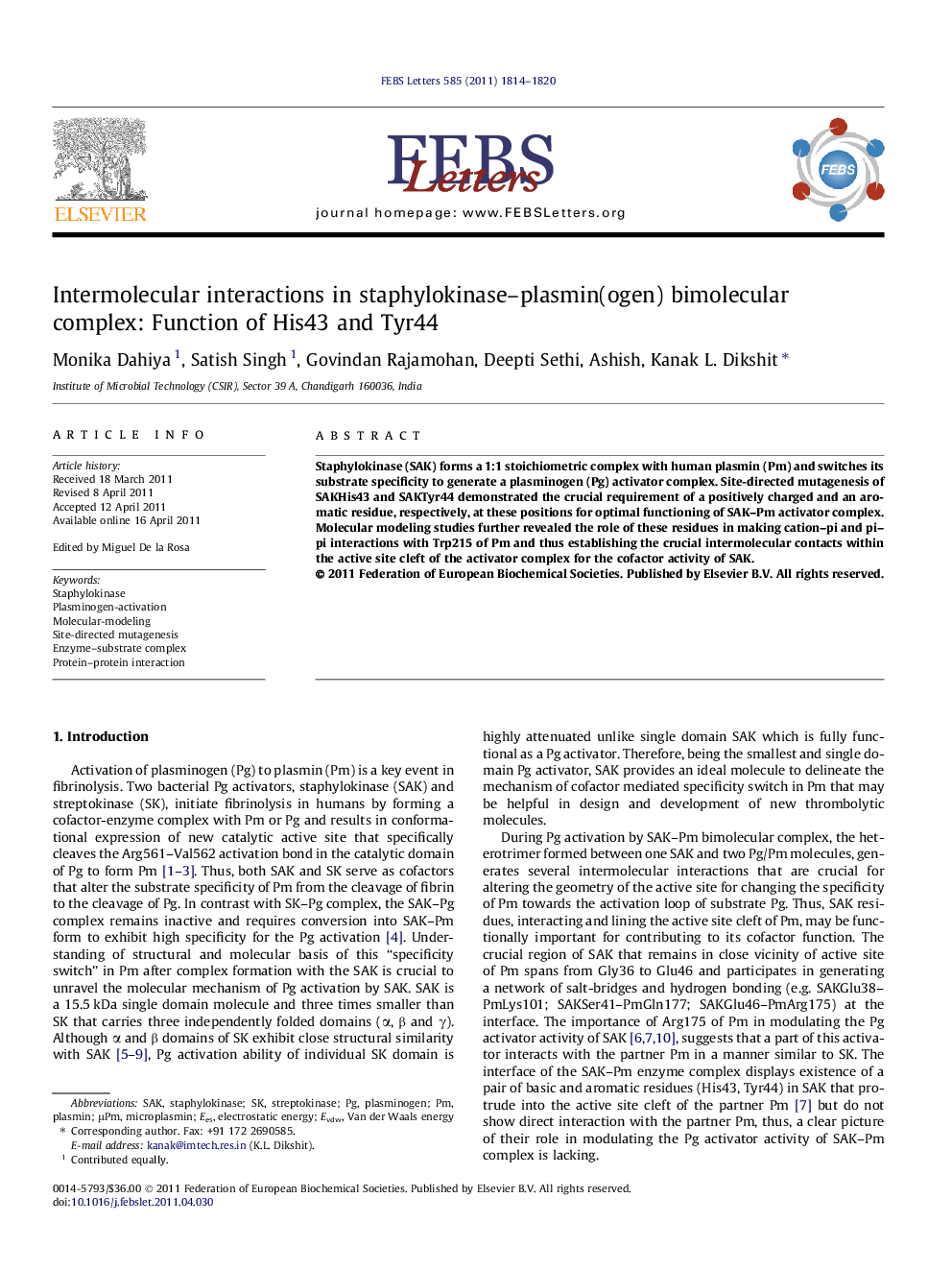| Article ID | Journal | Published Year | Pages | File Type |
|---|---|---|---|---|
| 10872107 | FEBS Letters | 2011 | 7 Pages |
Abstract
Staphylokinase (SAK) forms a 1:1 stoichiometric complex with human plasmin (Pm) and switches its substrate specificity to generate a plasminogen (Pg) activator complex. Site-directed mutagenesis of SAKHis43 and SAKTyr44 demonstrated the crucial requirement of a positively charged and an aromatic residue, respectively, at these positions for optimal functioning of SAK-Pm activator complex. Molecular modeling studies further revealed the role of these residues in making cation-pi and pi-pi interactions with Trp215 of Pm and thus establishing the crucial intermolecular contacts within the active site cleft of the activator complex for the cofactor activity of SAK.
Keywords
Related Topics
Life Sciences
Agricultural and Biological Sciences
Plant Science
Authors
Monika Dahiya, Satish Singh, Govindan Rajamohan, Deepti Sethi, Ashish Ashish, Kanak L. Dikshit,
